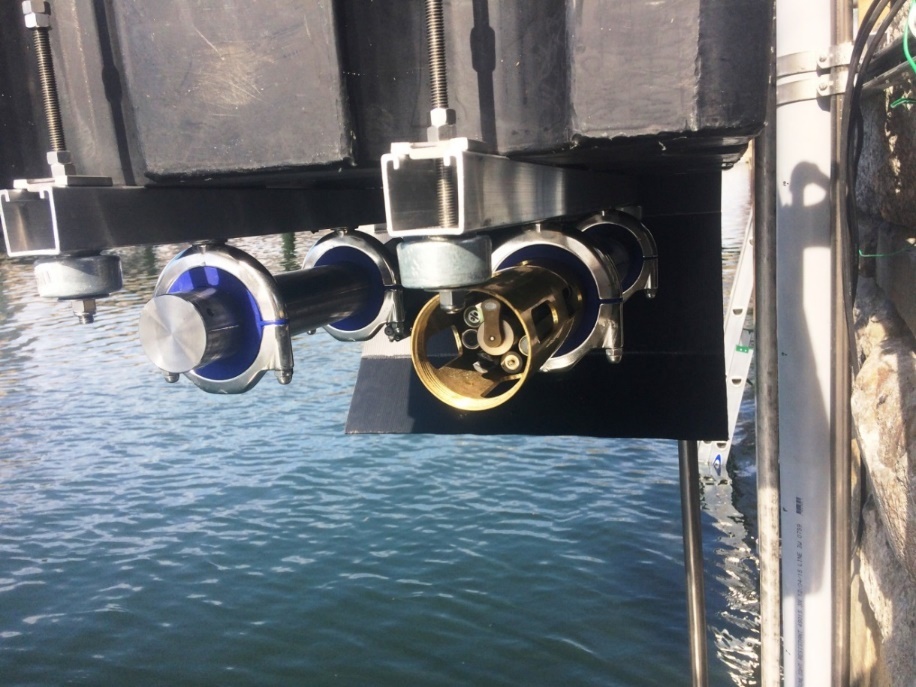Village Blue Brings Real-Time Water Quality Monitoring to Baltimore Harbor
Gushing water main breaks, chronic sewage overflows, and “fatbergs” in the pipes – when it comes to Baltimore’s failing infrastructure, sometimes it feels like we’re the only city dealing with these seemingly insurmountable problems. We often get asked during our Pollution 101 training events whether Baltimore is alone in its struggles for clean water, but the answer is a resounding “NO!”
While Baltimore is working to replace and repair the pipes throughout our sewer and stormwater systems, it’s important to remember that we’re certainly not the only city dealing with these issues. U.S. cities like New Orleans, Boston, and many others have successfully implemented their sanitary sewer Consent Decrees and have cleaner water to show for it; cities like Denmark’s Copenhagen have revitalized their once-industrial harbors to become places where it’s actually safe to swim much of the time. So why does it seem like Baltimore is struggling to achieve swimmable, fishable, drinkable waterways when other cities have been able to do so?
A chronic lack of investment in our infrastructure is finally catching up with us, and we’re now faced with footing the bill for a total overhaul of the system. Baltimore City is working on a comprehensive Headworks Project at the Back River Wastewater Treatment Plant that is designed to fix a part of the problem, and we’re playing “catch-up” to fix breaks in the drinking water, stormwater, and sanitary sewer systems while attempting to complete proactive rehabilitation projects at the same time.
It seems overwhelming, but progress is happening. And while construction is taking place, an exciting project is emerging in Harbor East at the confluence of the Jones Falls stream and the Inner Harbor (located adjacent to the Waterfront Partnership’s Mr. Trash Wheel). The Environmental Protection Agency’s and United States Geological Survey’s Village Blue project aims to bring higher resolution to our understanding of water quality in the Harbor, so we can begin to plan for a future when our waterways might be suitable for recreation again. Additional information on the Village Blue project as well as visualization of the sensor data is at https://www.epa.gov/water-research/village-blue.
The innovative Village Blue project aims to pair sensor-based real-time measurements of water quality (such as turbidity and water temperature) with current conditions surrounding the Harbor (tides, rainfall data, reported sewage overflows) to develop a model that will help scientists forecast potential bacteria content and contact risk in the Harbor at any given time. This method of providing short-term forecasts, or “now-casts” of water quality, can provide information for activities such as kayaking, fishing, and paddle boarding in the Harbor as well as more general information on the microbiological water quality of the Inner Harbor. Blue Water Baltimore is proud to collaborate with EPA on the Village Blue project by collecting daily bacteria samples last year that are being used in these modelling efforts. Stay tuned for more information in the coming months on the results of the analyses and how the real-time data can be used to help us understand the health of the Inner Harbor.
EPA’s Village Blue project is a pilot program that could be implemented in waterways throughout the U.S. as a tool for understanding water quality in streams, rivers, and harbors across the nation. We know that microbial water quality is just one piece of the puzzle; Baltimore’s waterways are plagued not only by sewage overflows but also by trash, polluted stormwater runoff, and legacy toxins. But the Village Blue project is bringing us one step closer to our goal of swimmable, fishable, drinkable waterways. If other cities can do it, so can we!
Photo courtesy of USGS.

